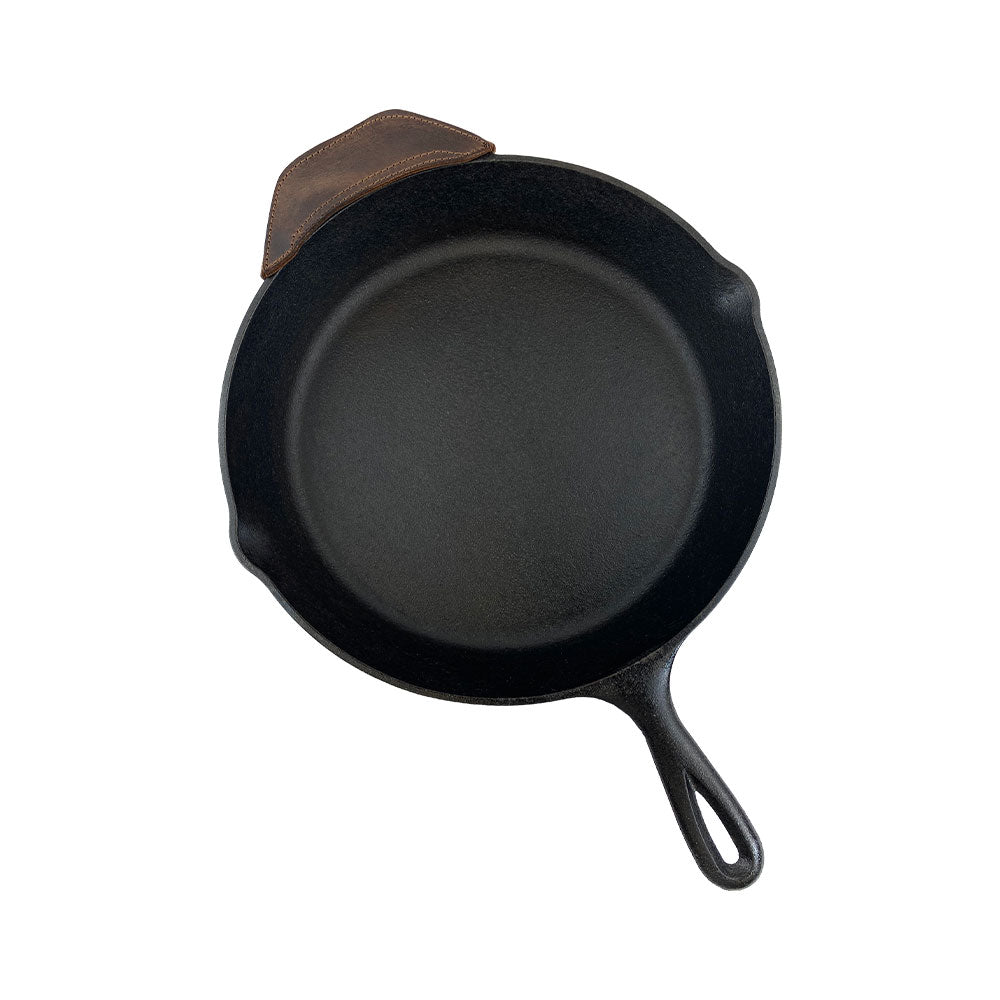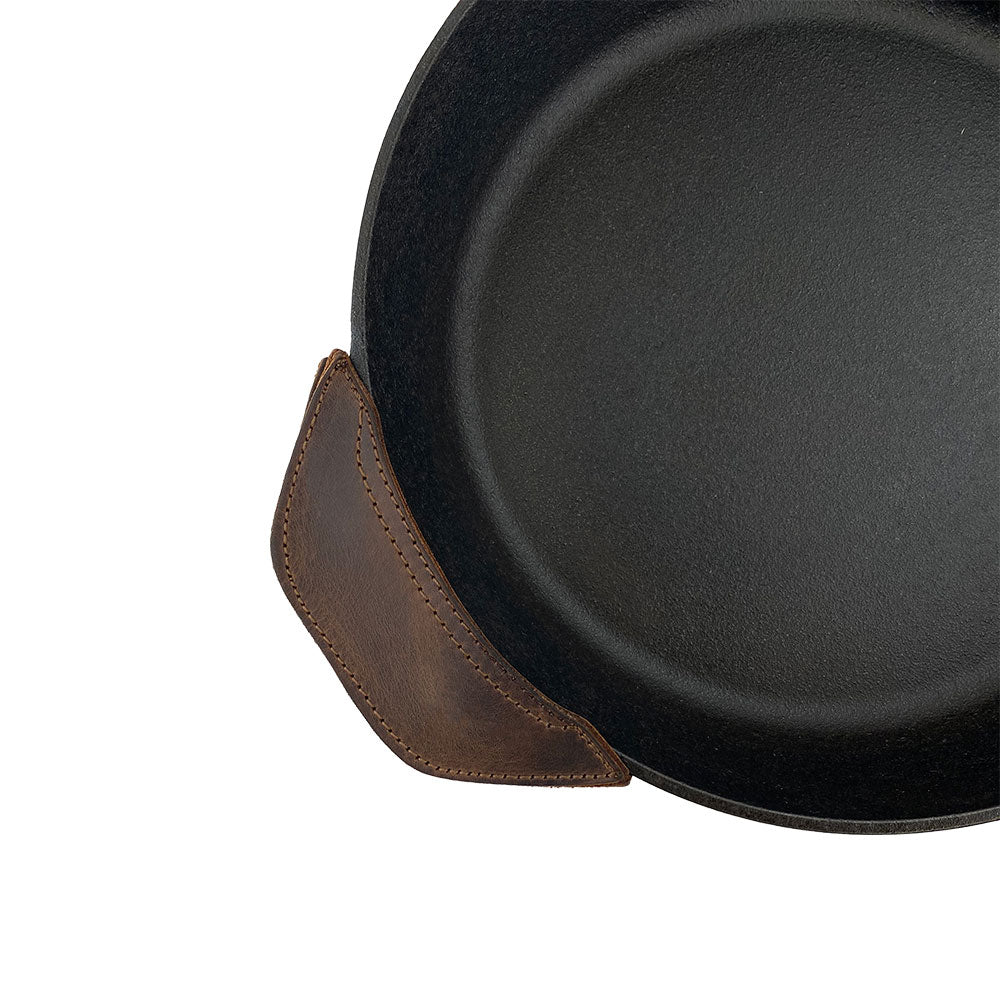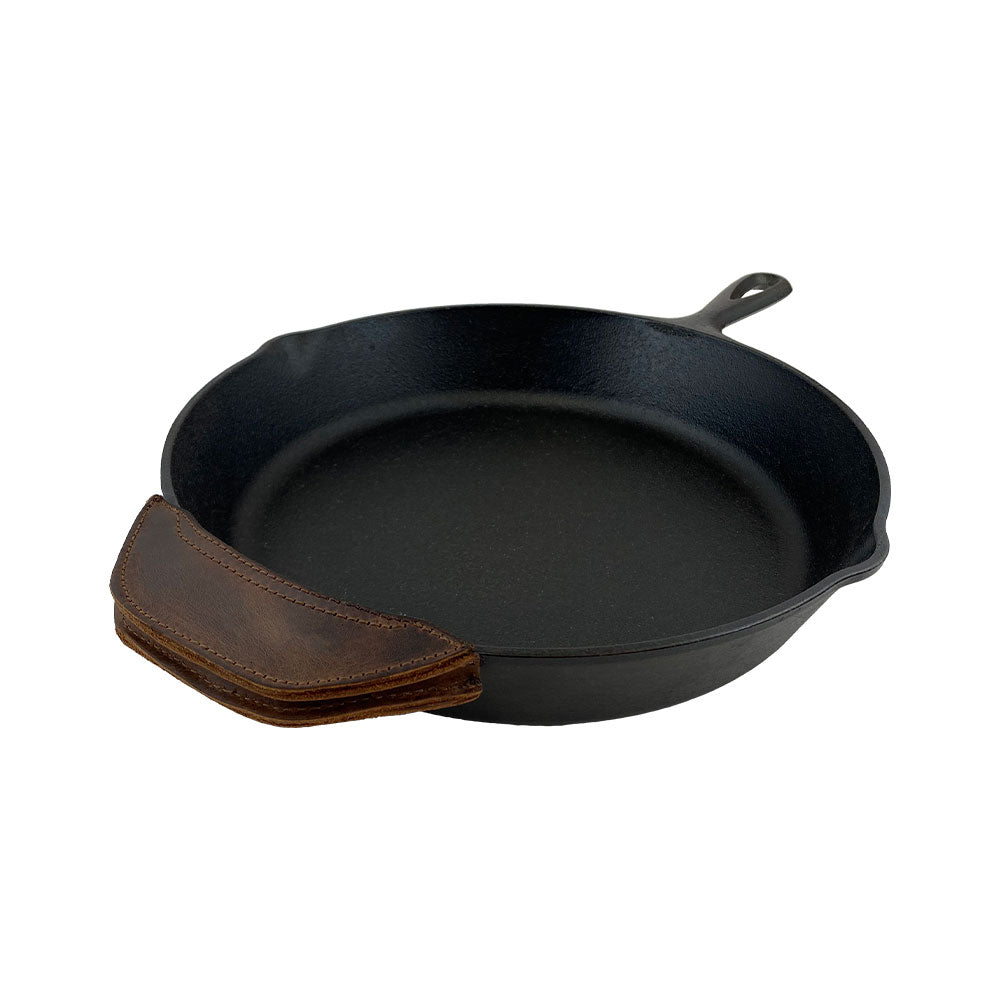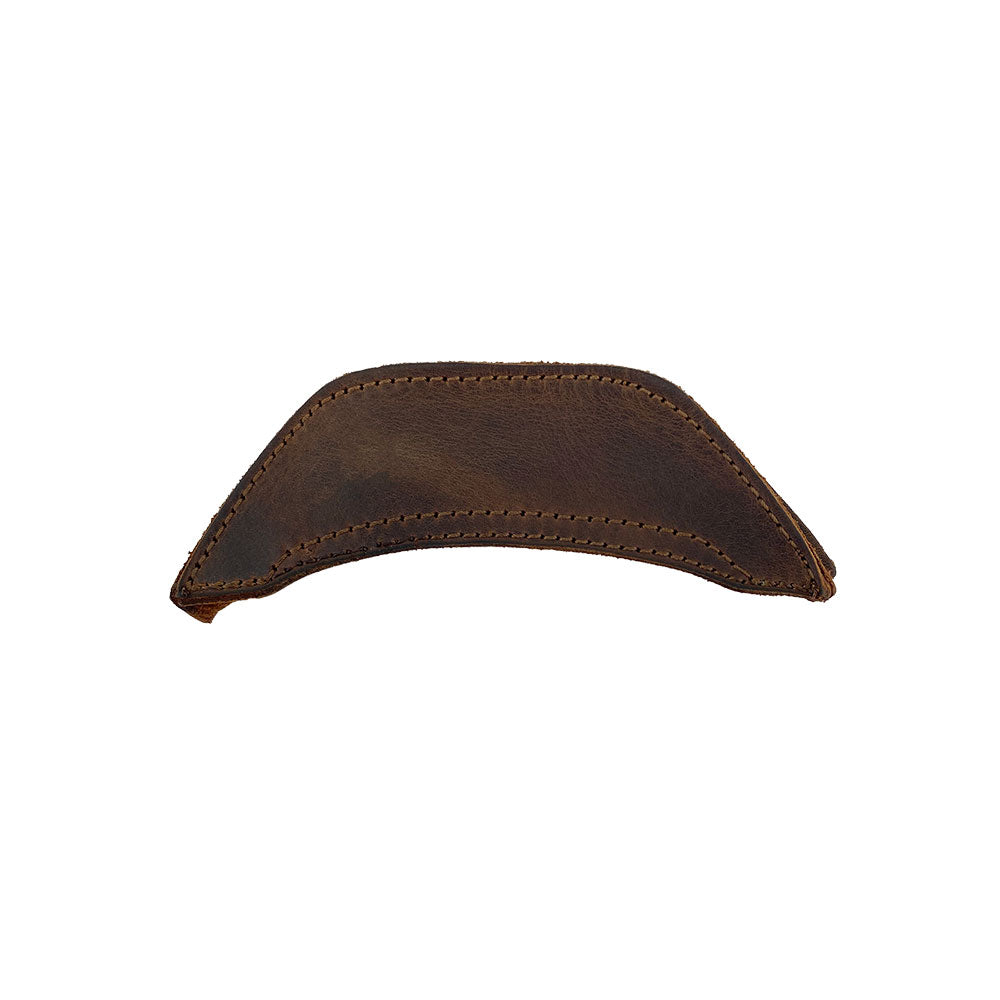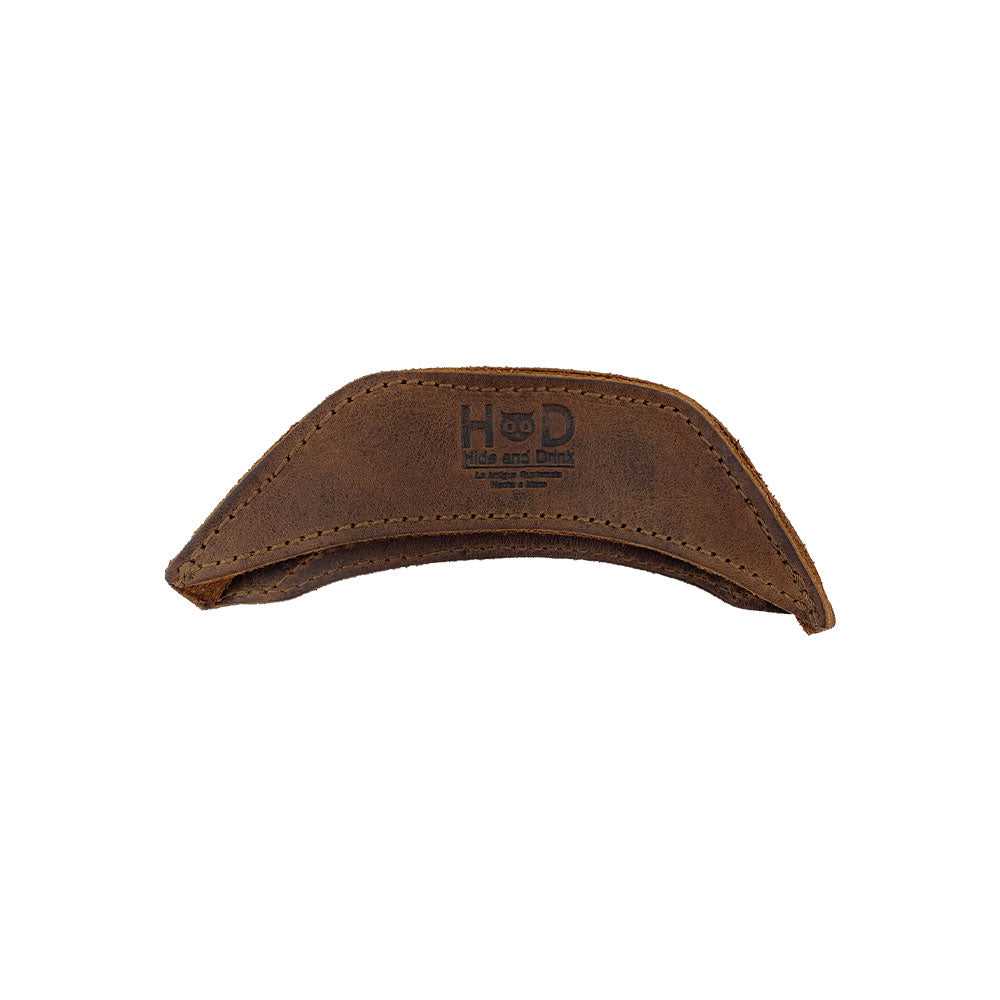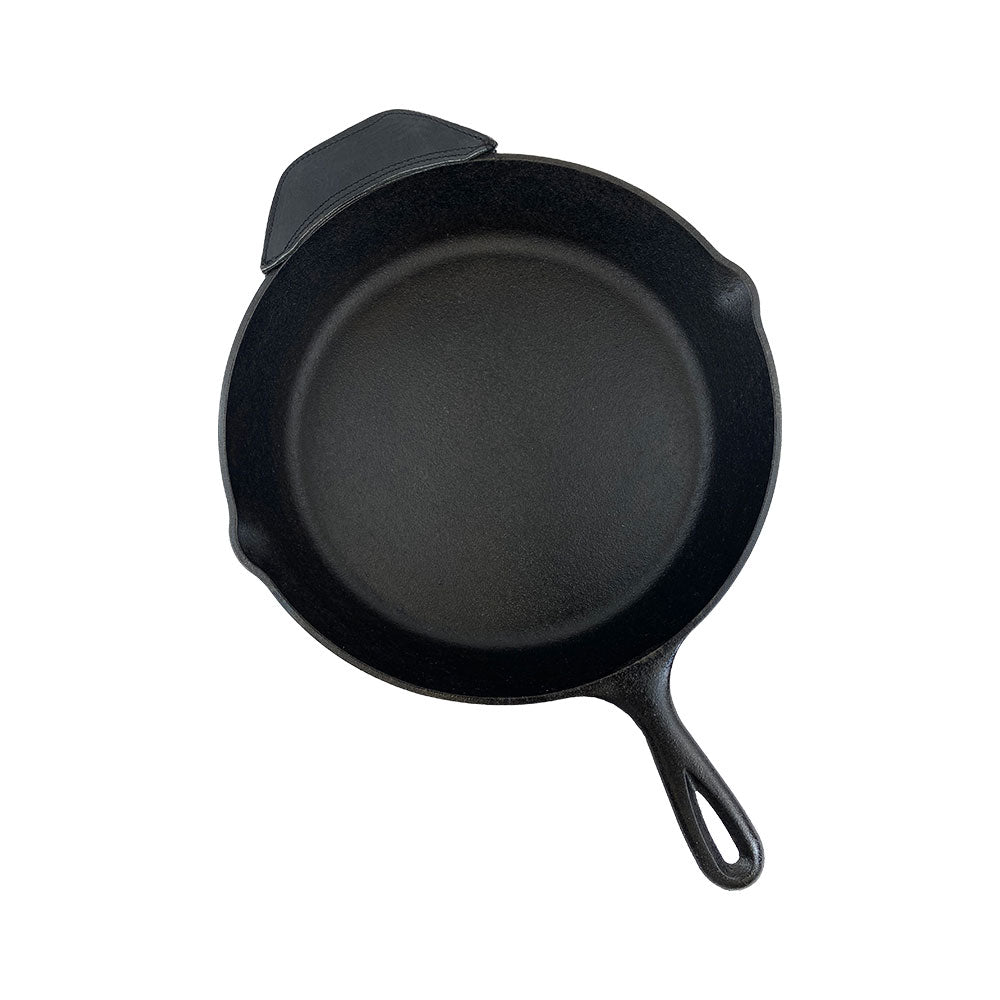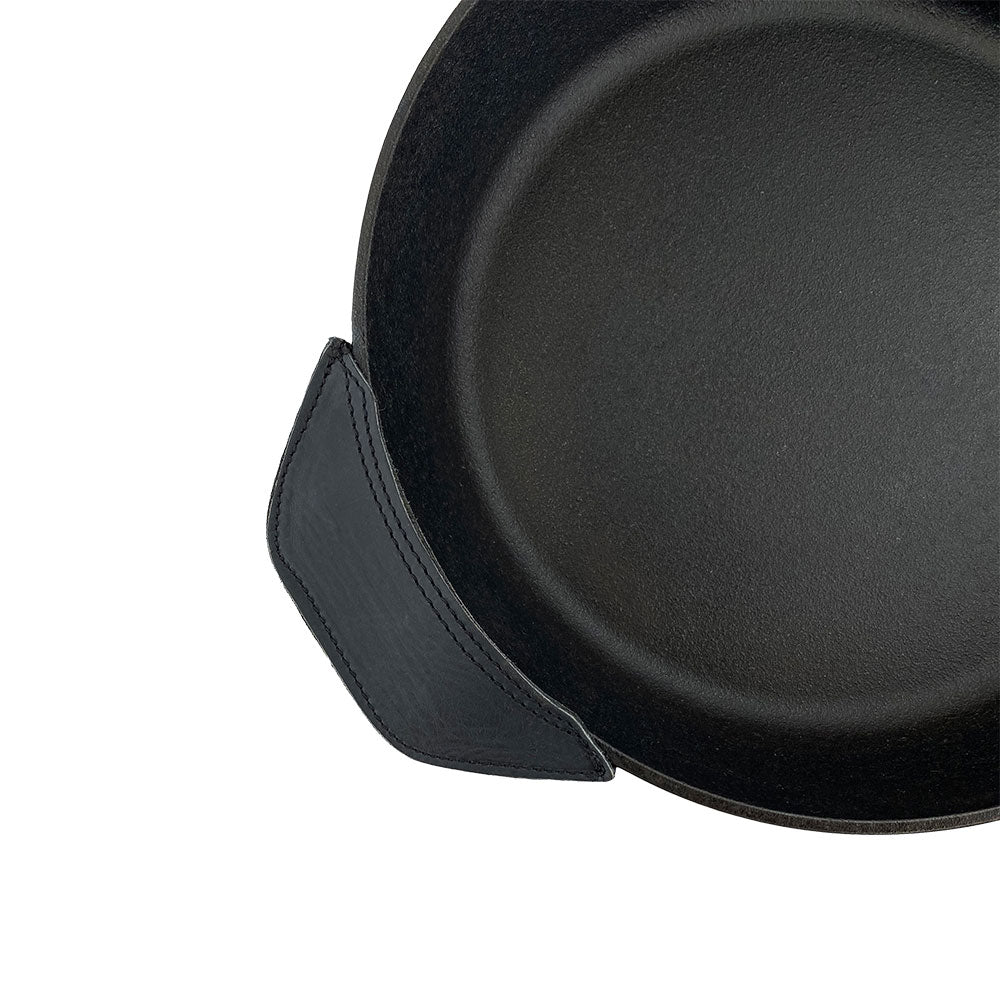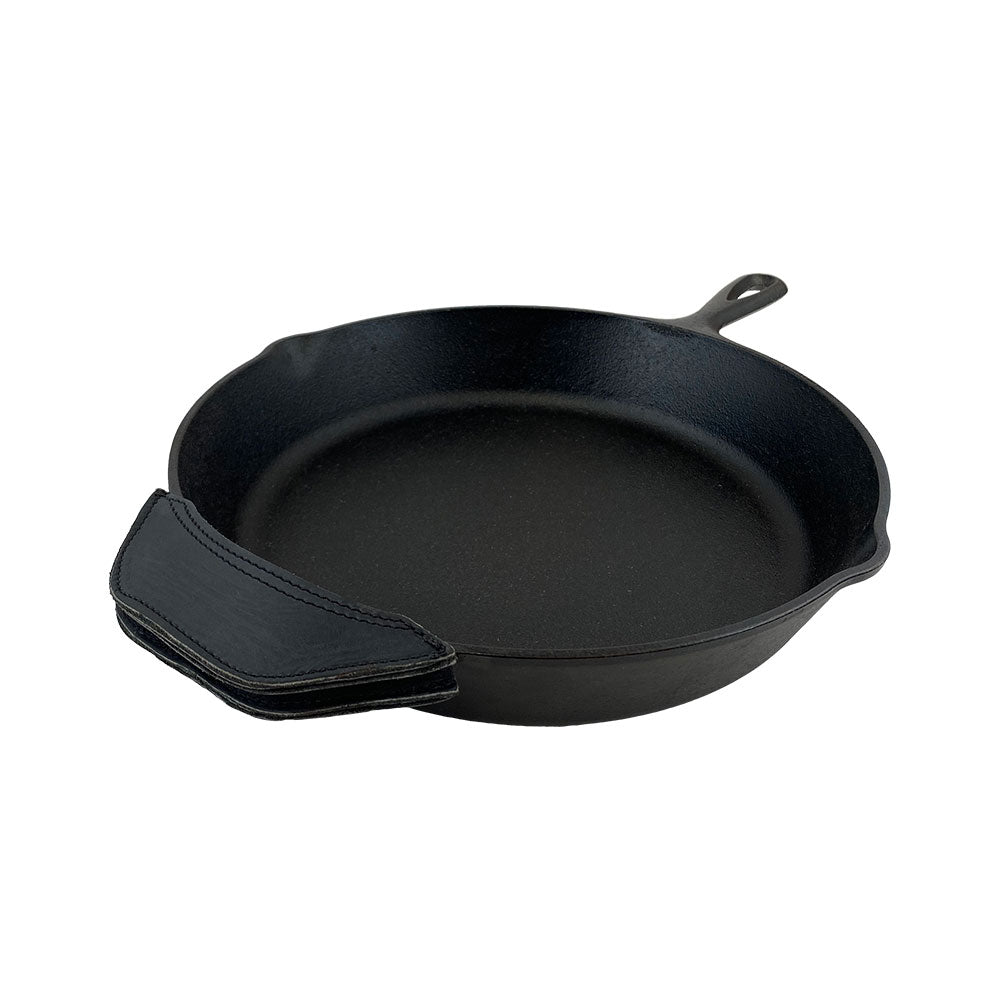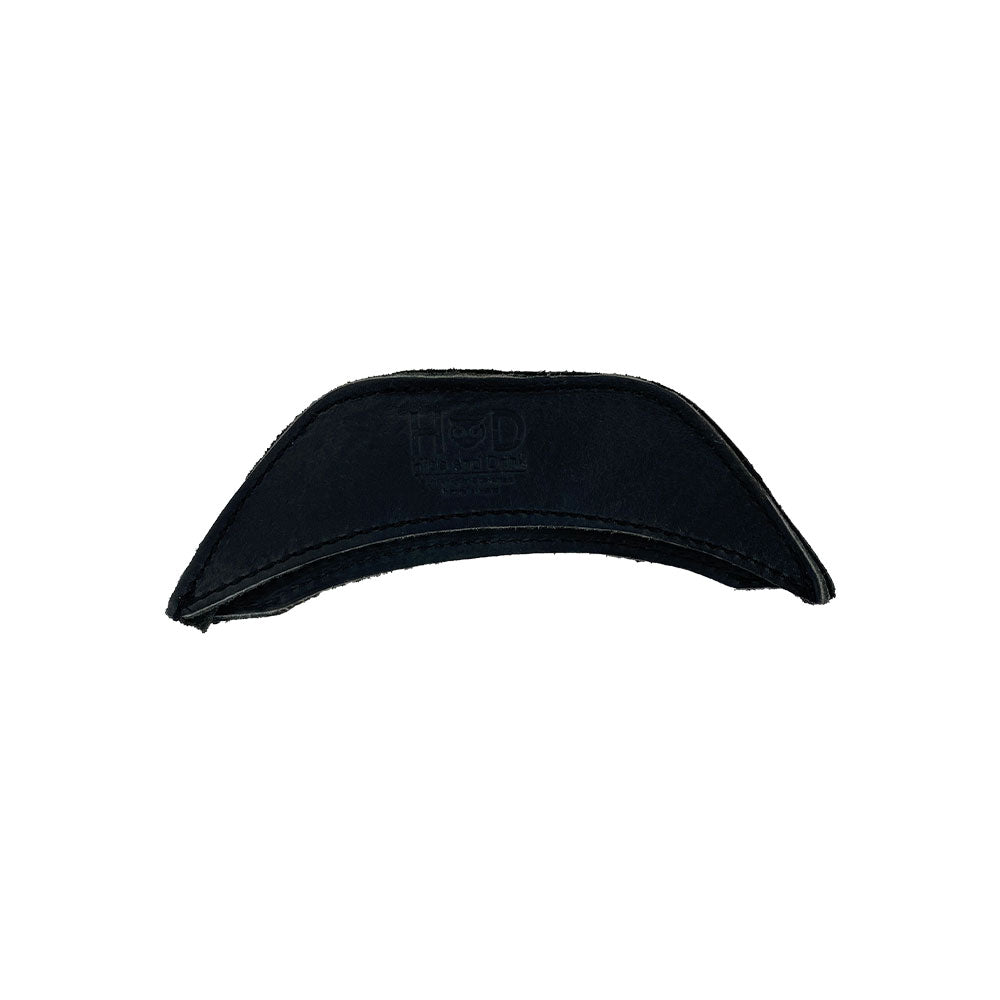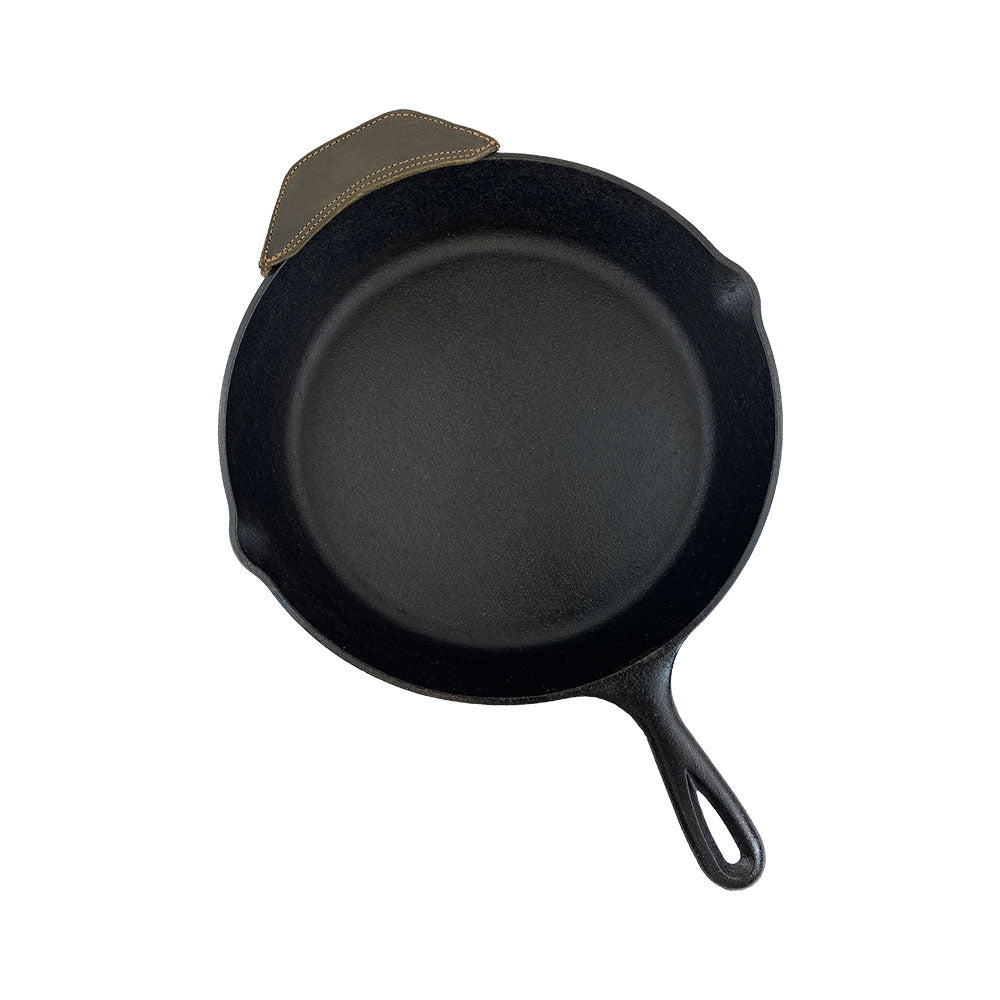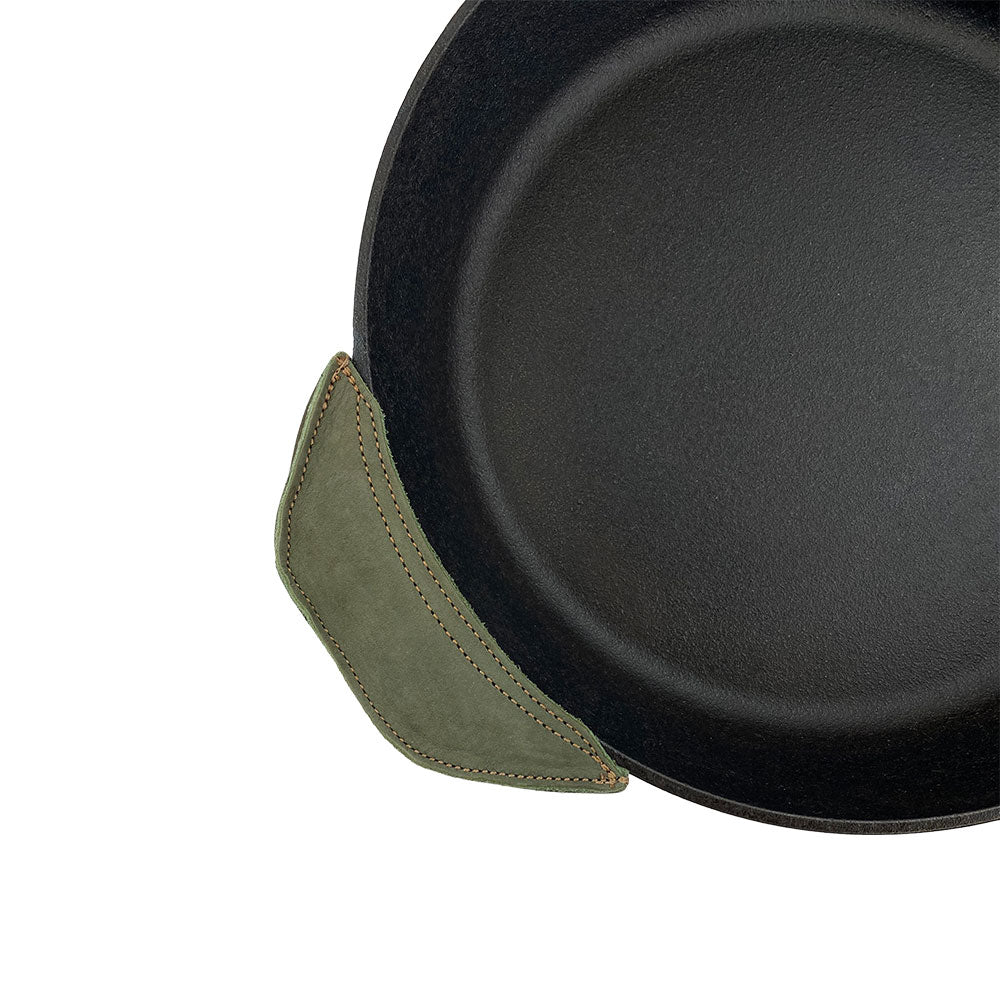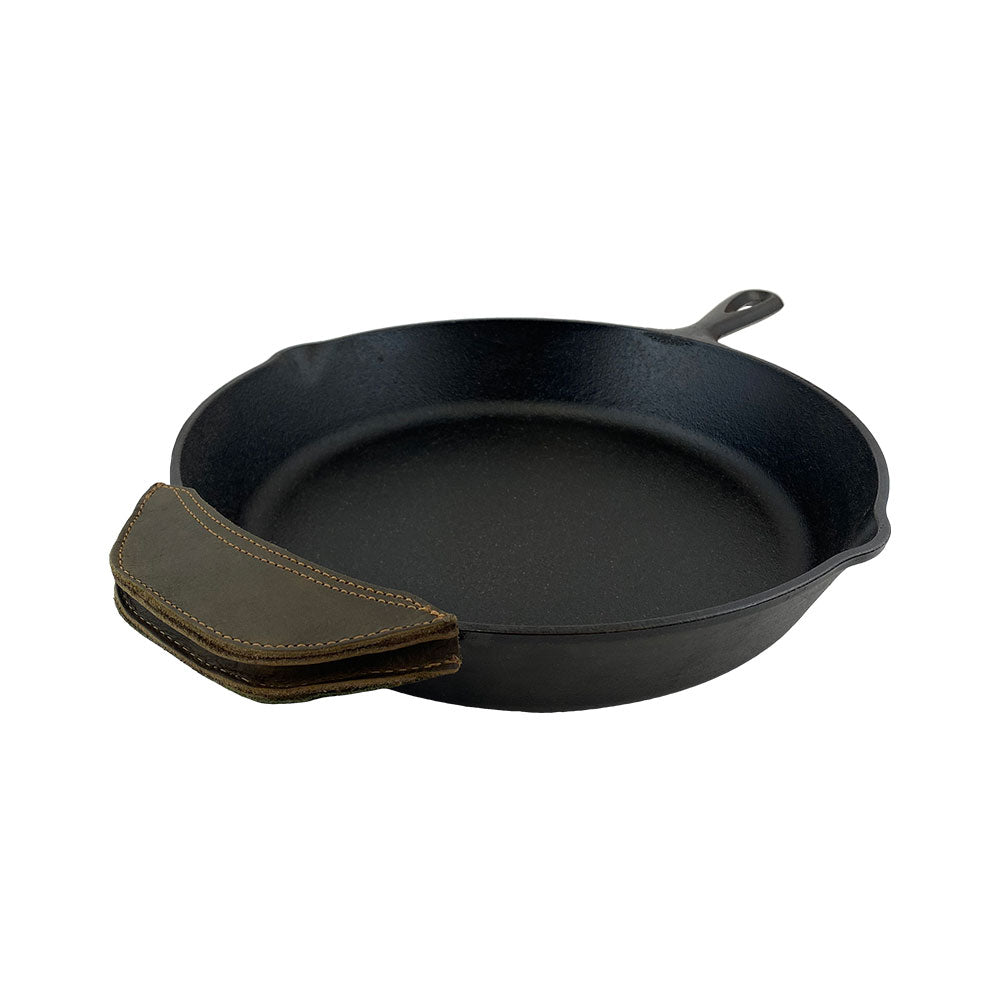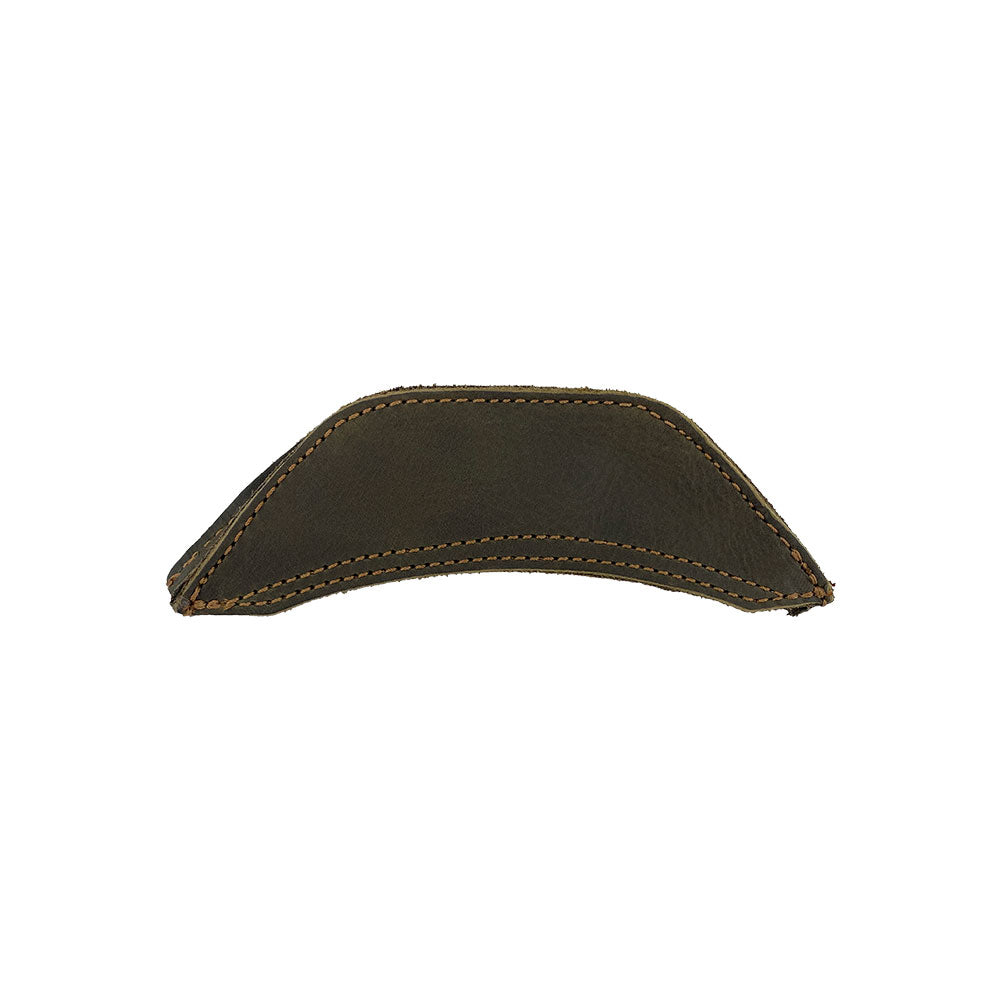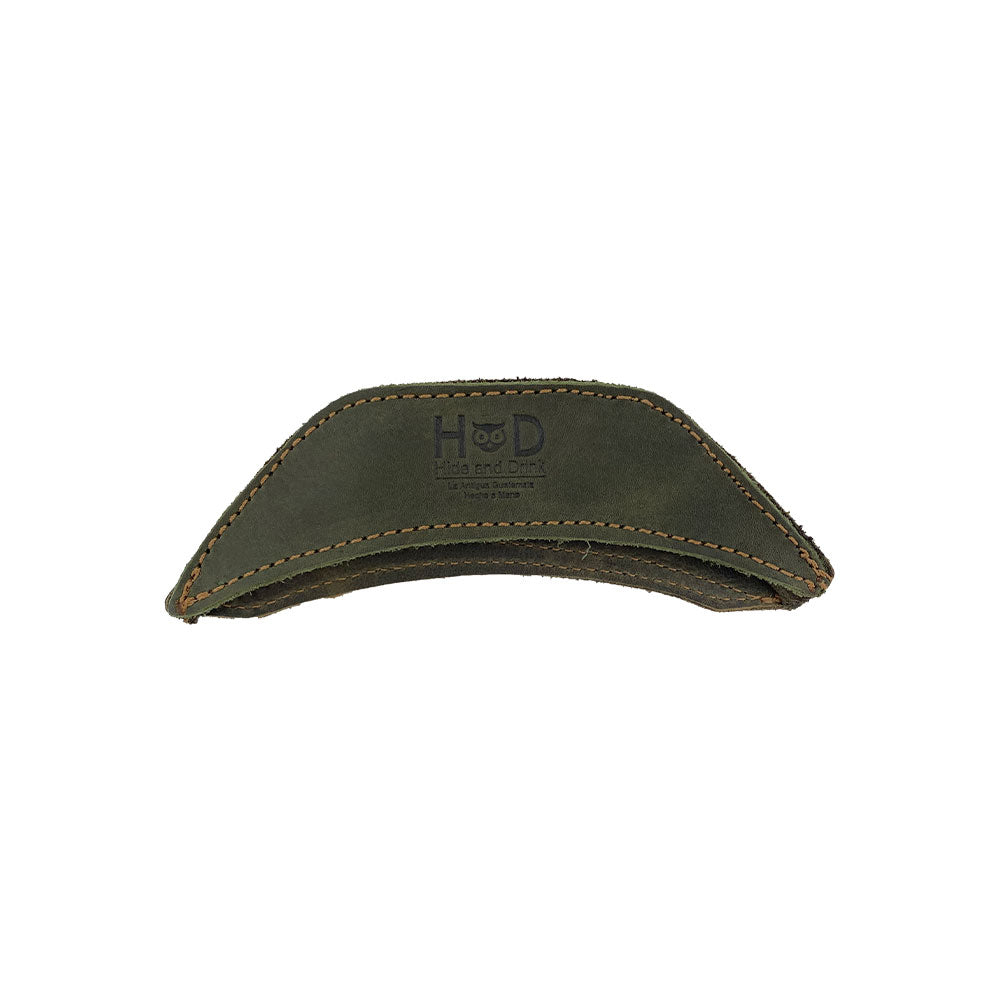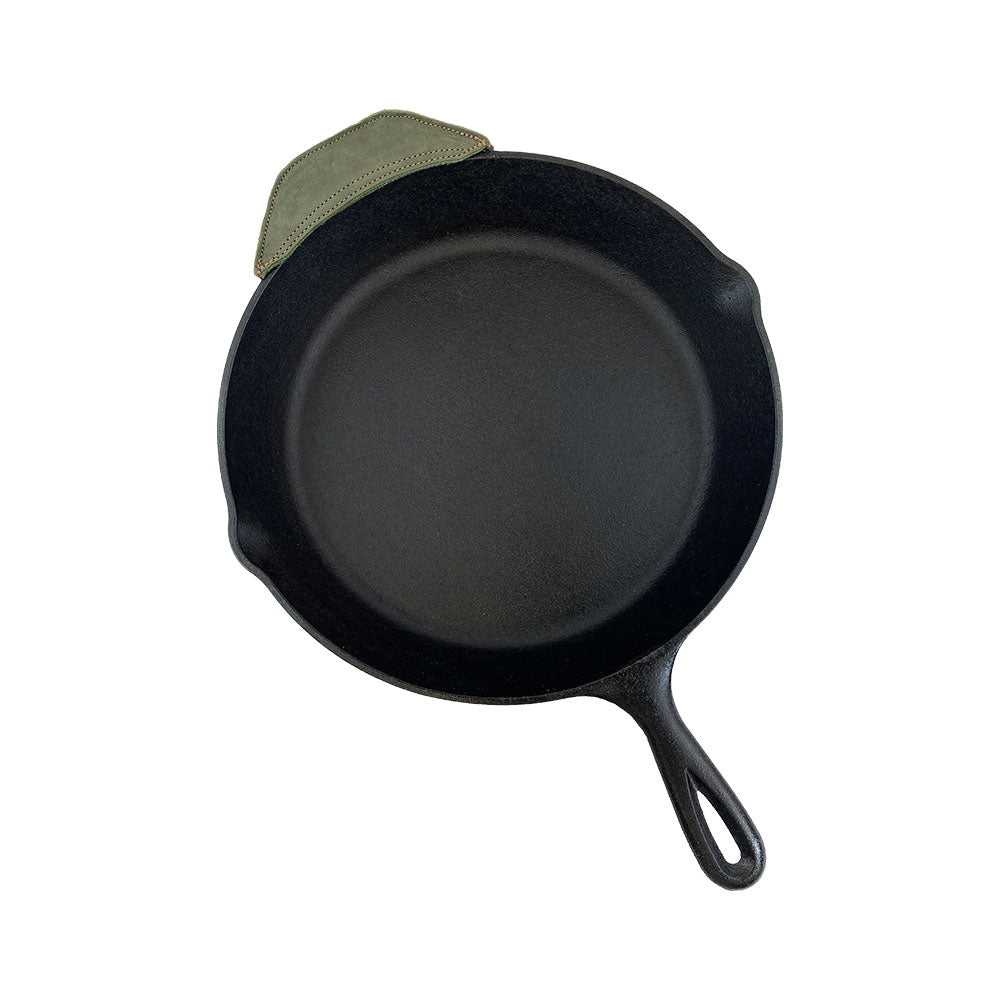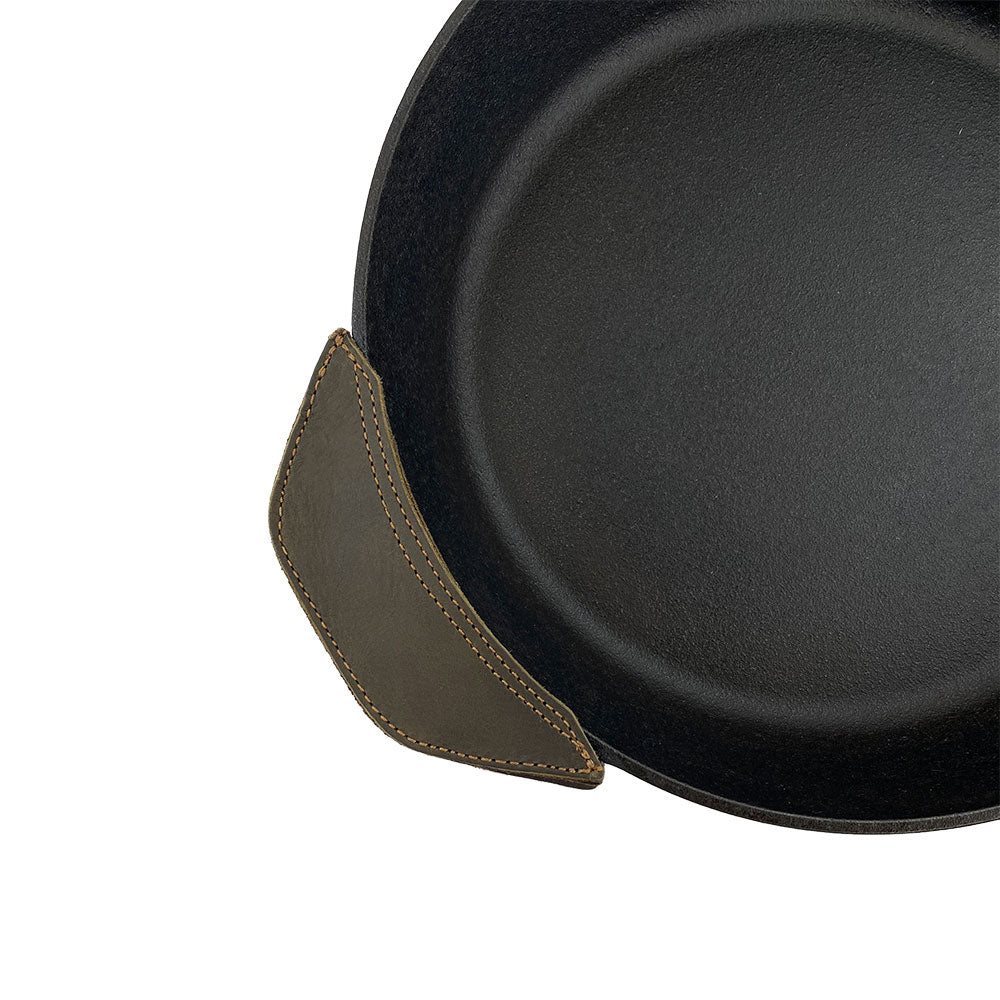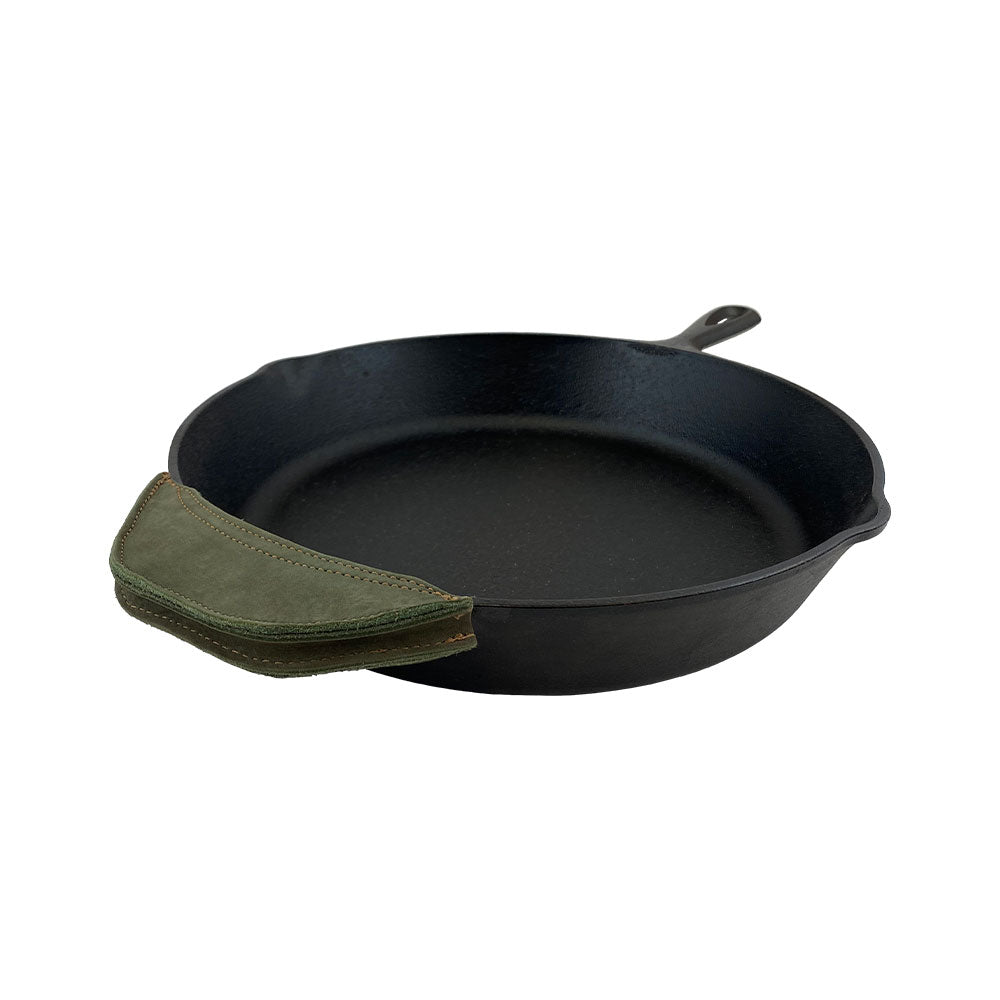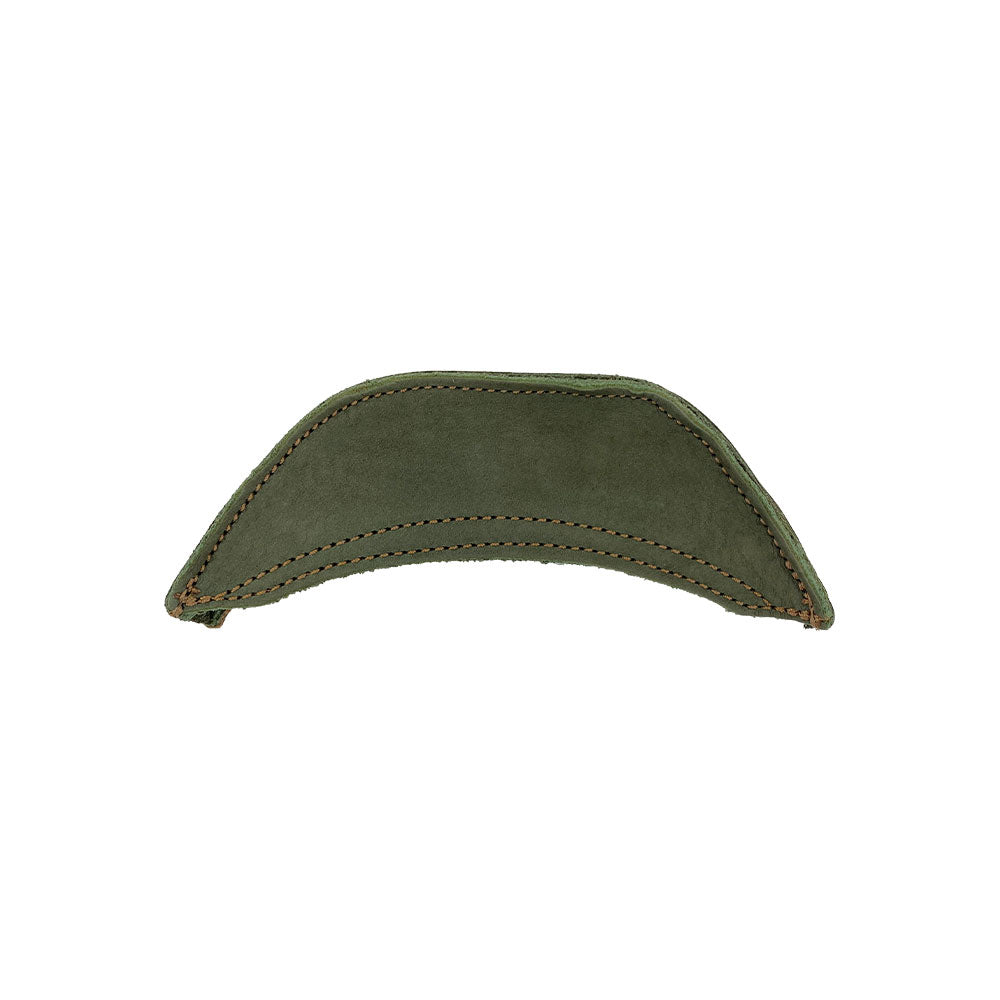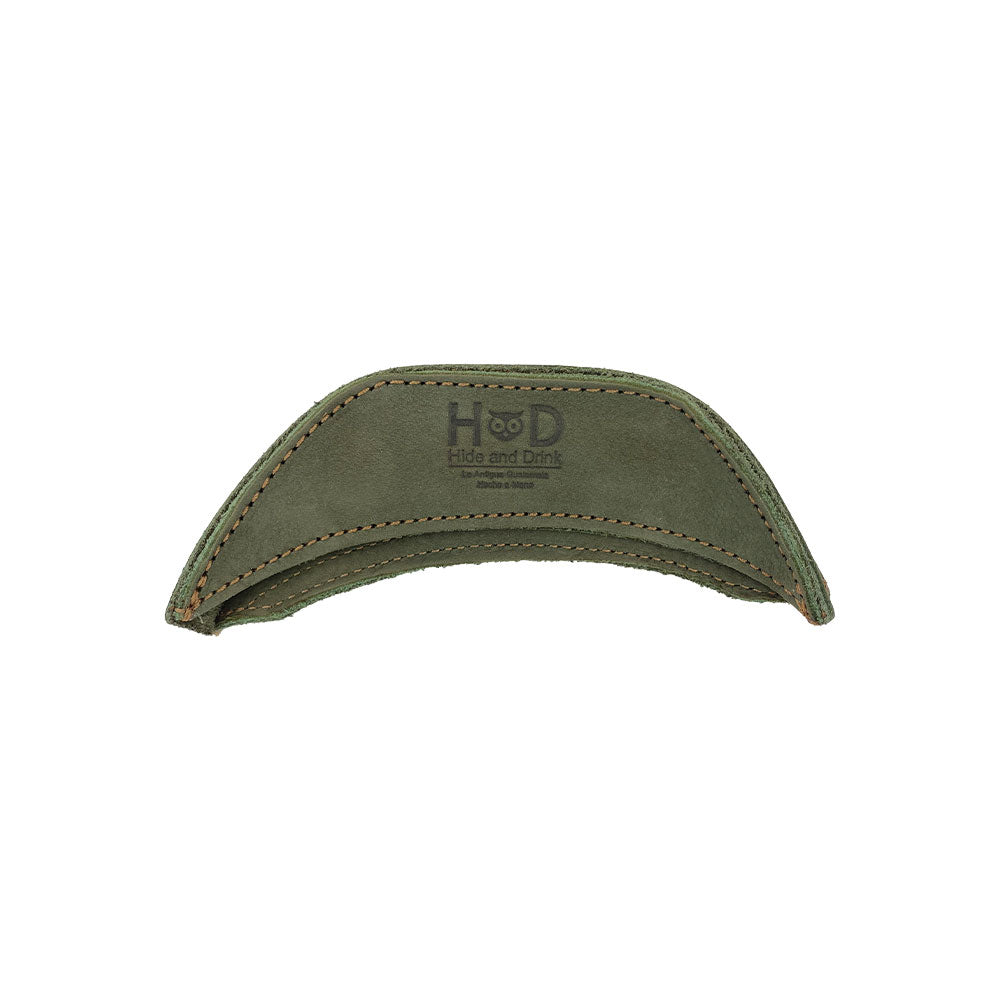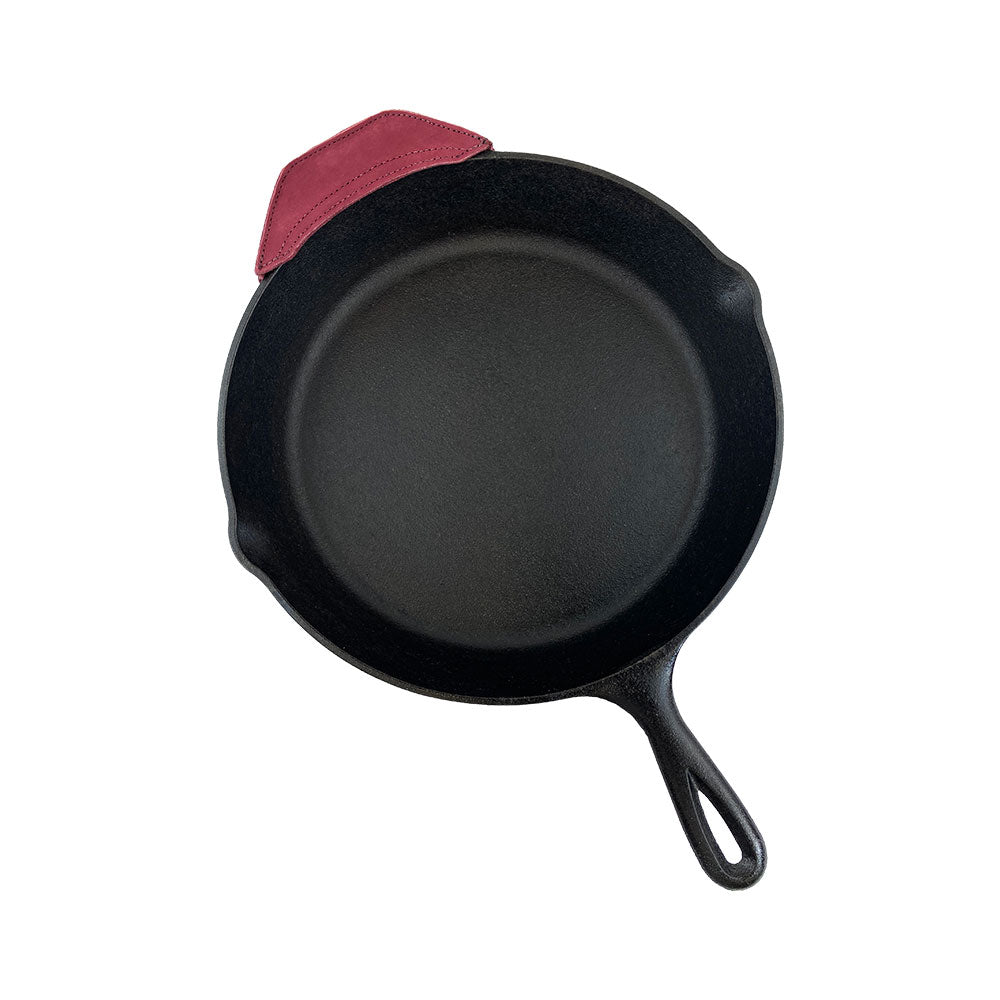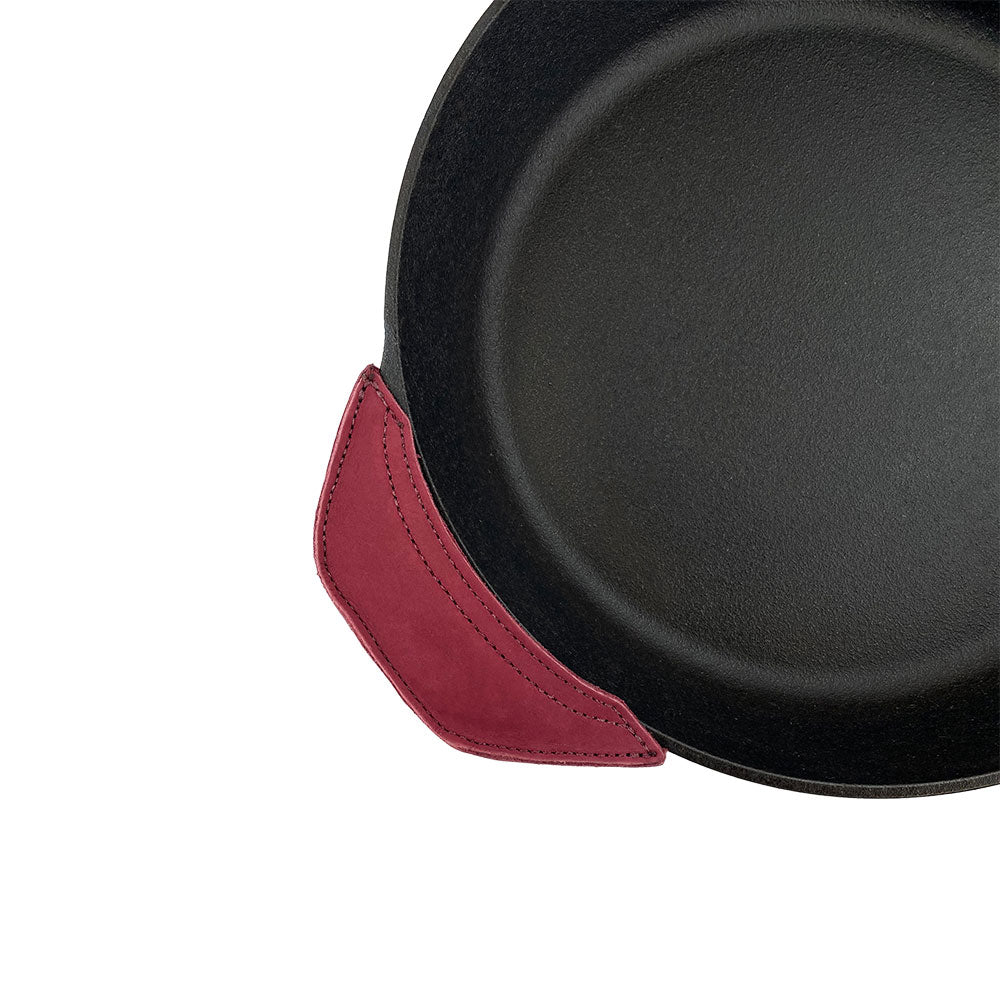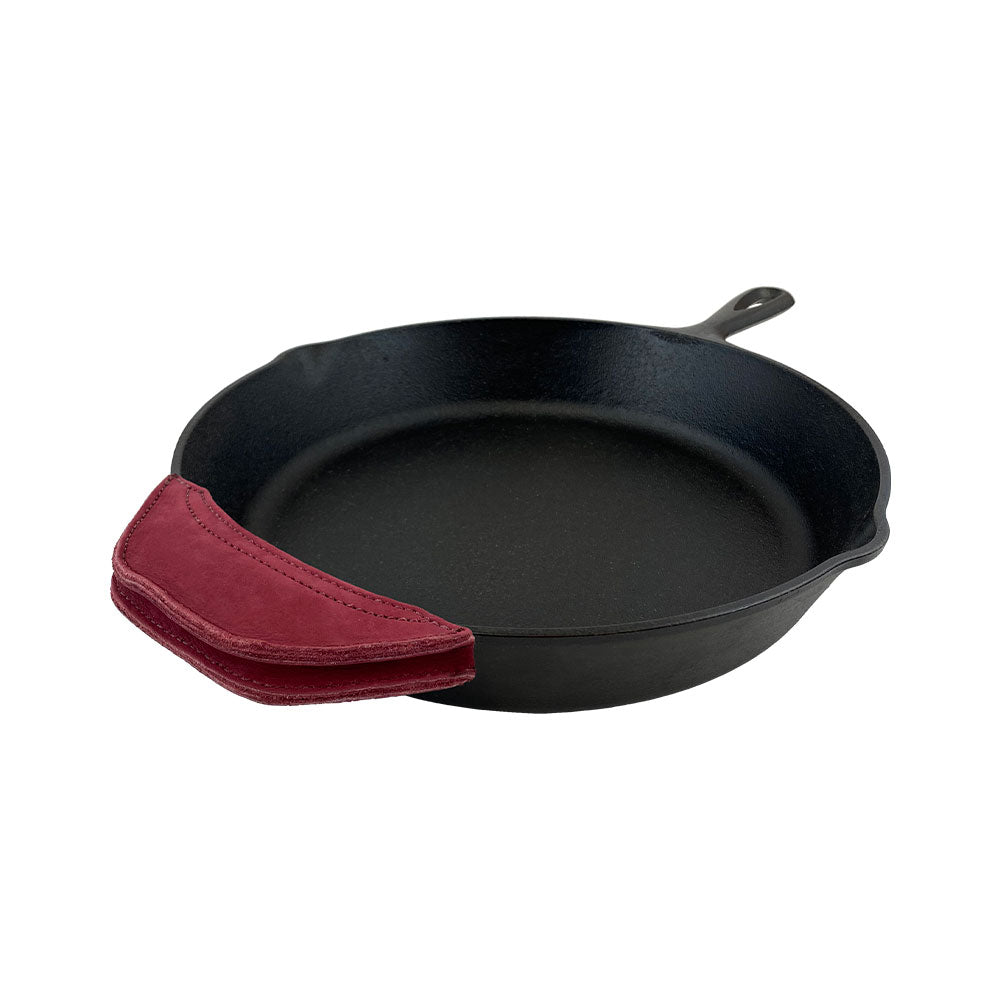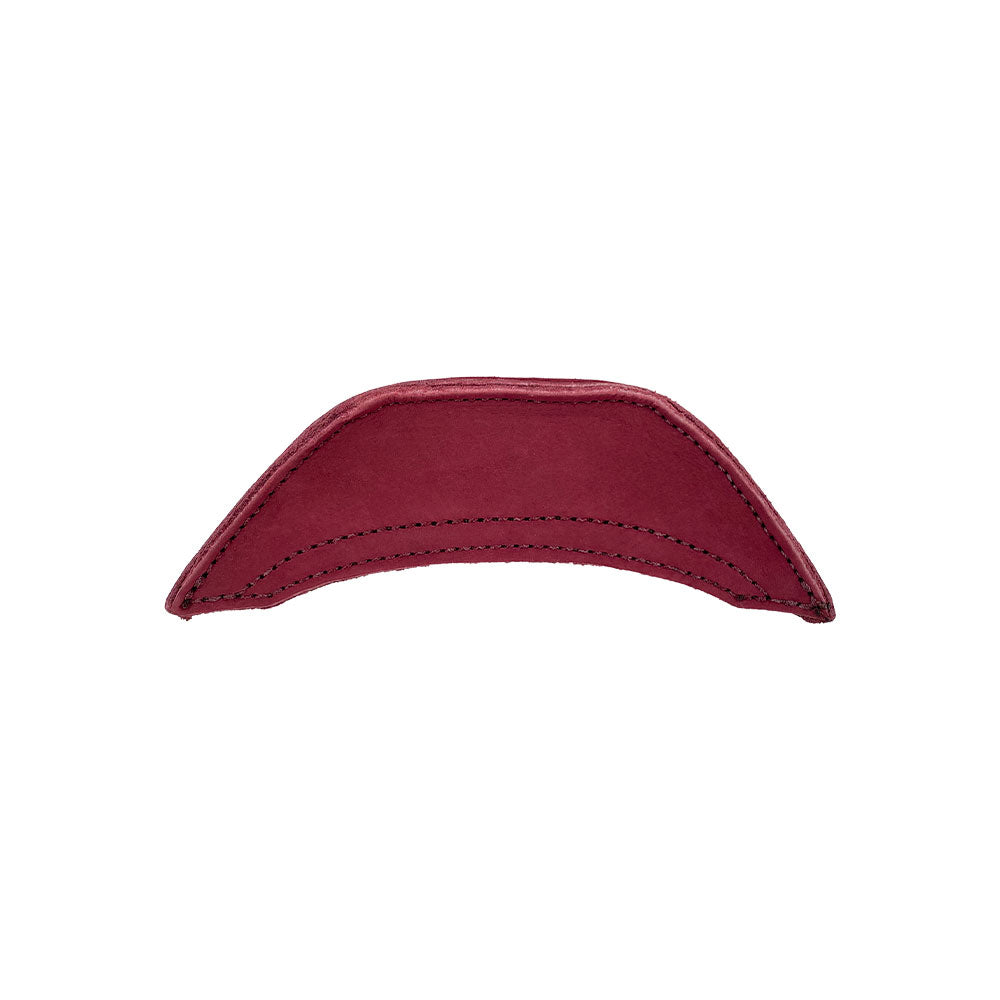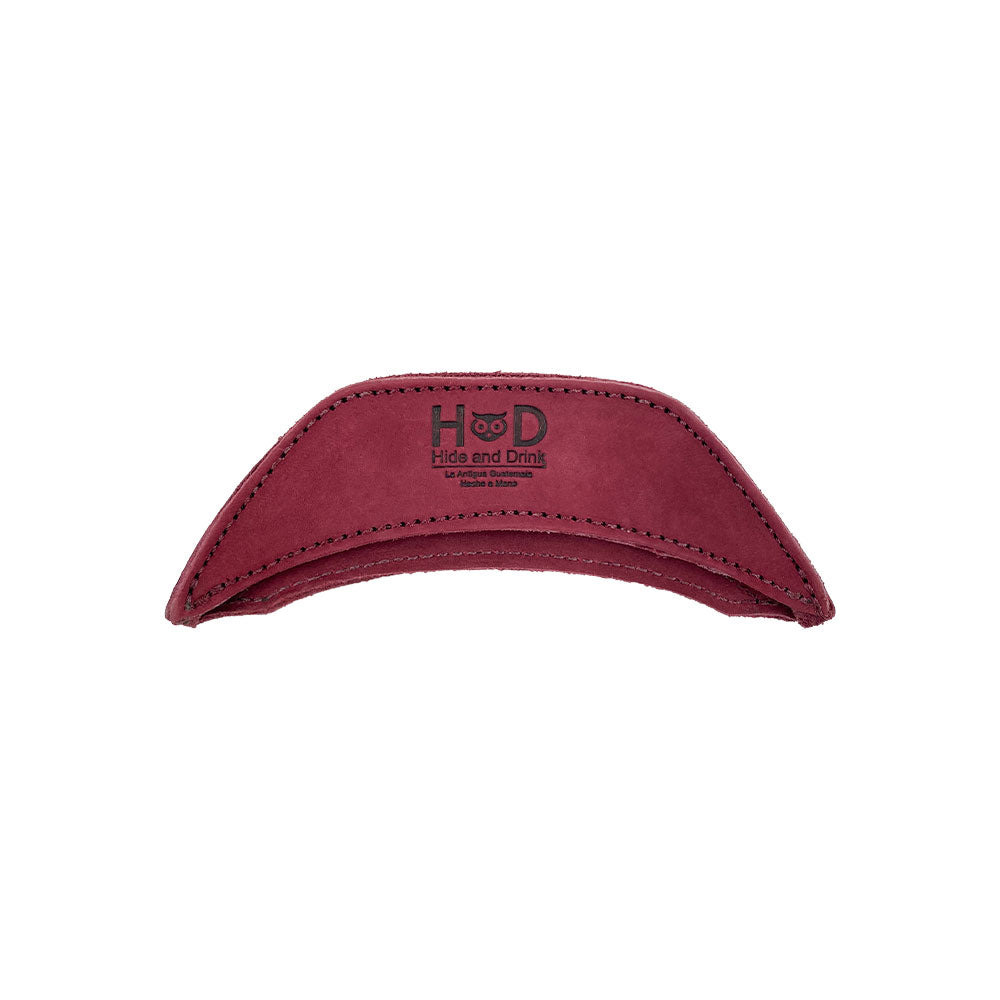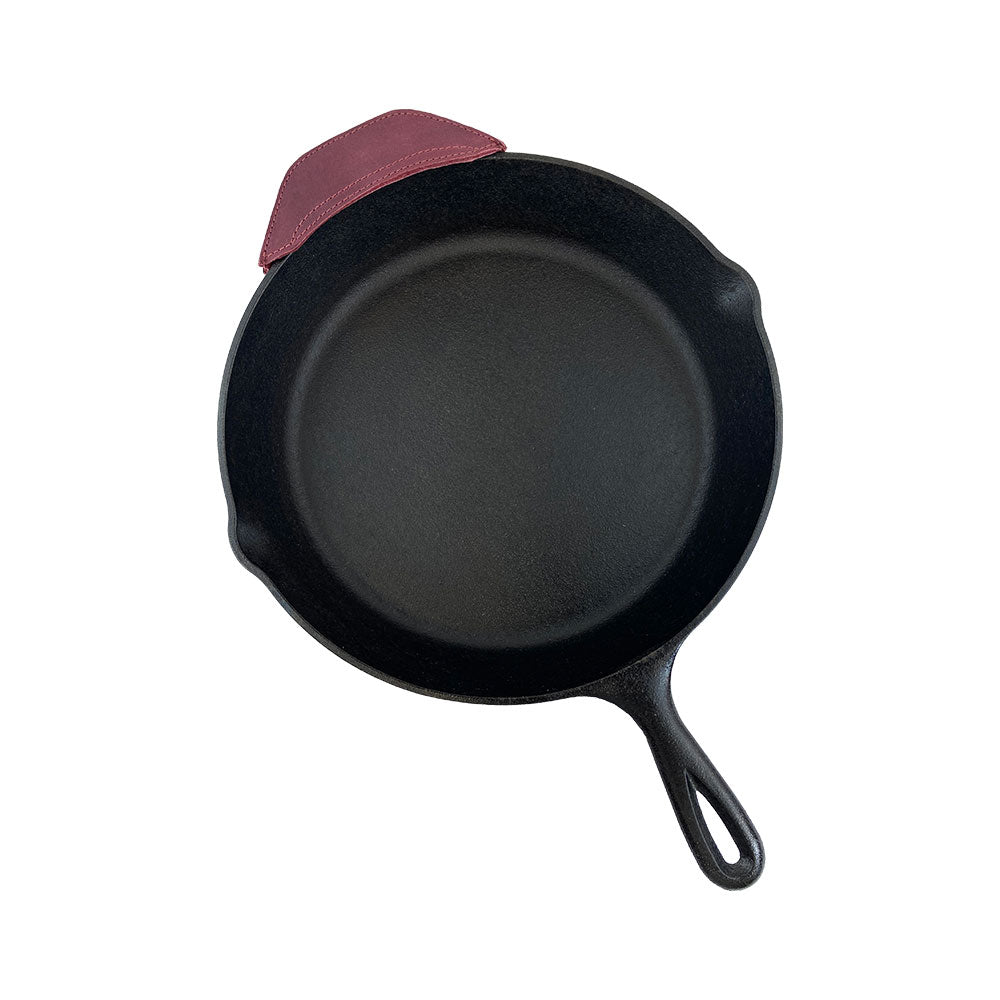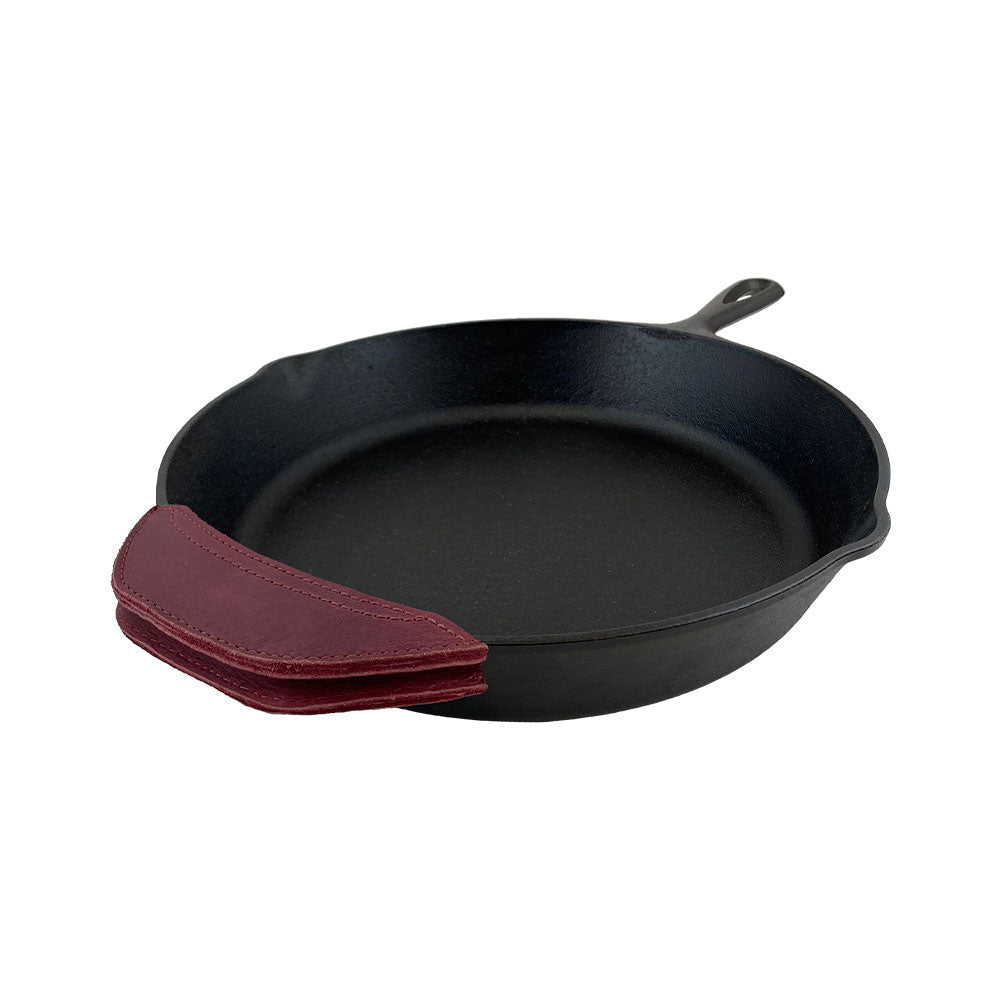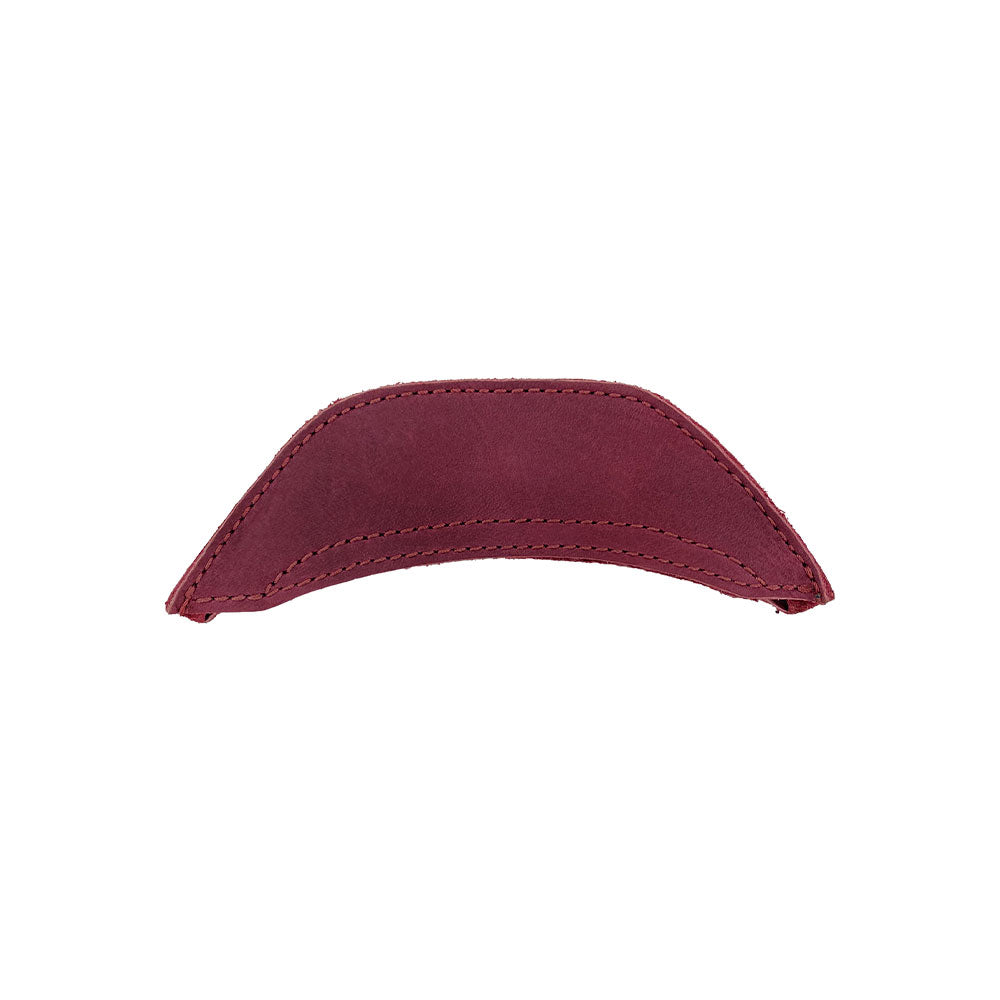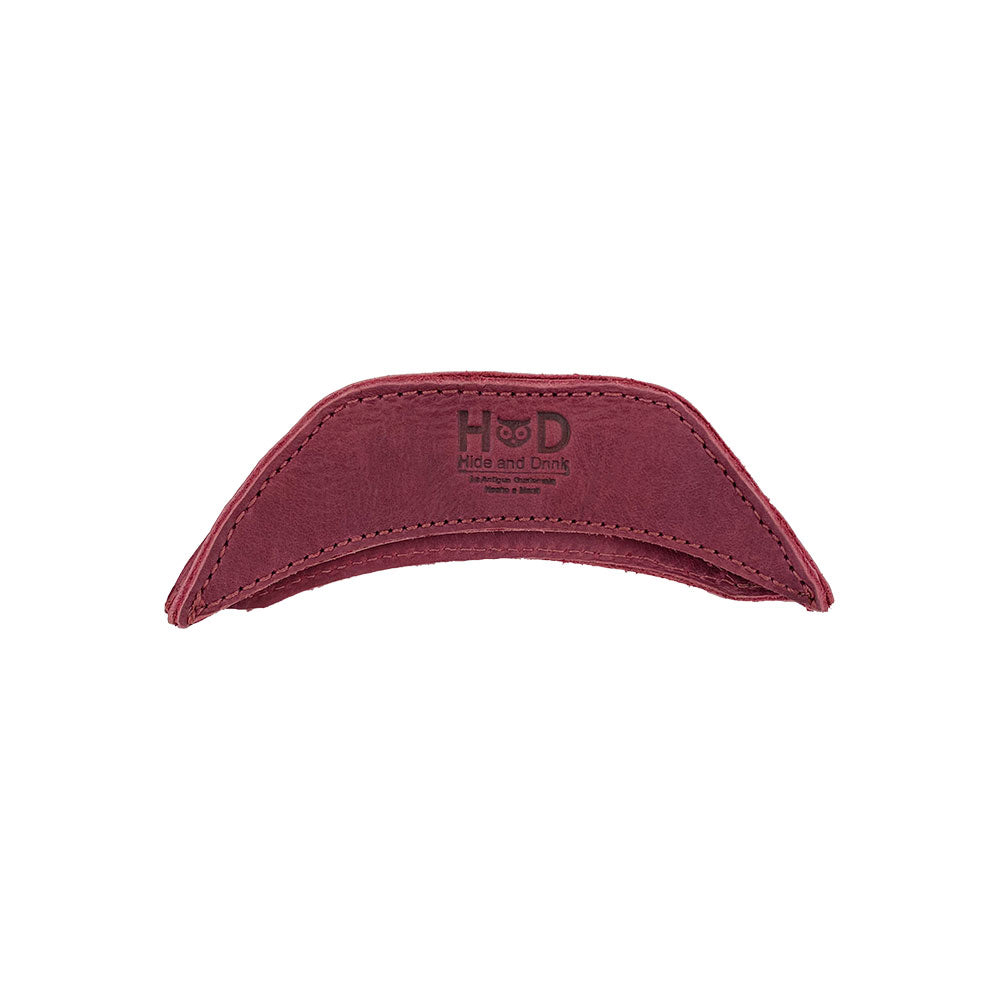- Handmade Leather Cover Lined with Soft Sheepskin for Easy Insertion and Removal
- Durable Double Stitch Design Offers Protection Up to 450 Degrees
- Fits Majority of Cast-iron Skillets
- Unique and Attractive Addition to Any Kitchen
- Perfect Pairing with Our Panhandle Cover
SPECIFICATIONS
Dimensions
Length: 6 inches
Height: 1.8 Inches
Width: 0.7 inches
Materials
Full Grain Leather, Attractive Suede Leather and Soft Sheepskin
USE & CARE
Over time and with use, the leather will assume a unique patina. If desired, condition with mineral oil or beeswax leather conditioner.
PRODUCTION & DESIGN
This leather piece with rustic accents is meant to be passed on to future generations.
Hide & Drink's handmade leather Potholder is the sidekick of our great Panhandle. Lined with soft sheepskin, designed to fit most assist handles found on larger skillets. The durable double-stitch / double-layer design offers protection up to 450-degrees. Creates a safe and comfortable grip for hot cookware handles. Flexible enough to store compactly in a drawer.
Cast iron dates back to as far as the 5th century BC, with the first iron artefacts discovered in China. The Chinese used cast iron for agriculture, warfare and architecture. Fast forwarding up to the 15th century, cast iron was extremely popular throughout Europe, with France using it for their military, and with the British during their Reformation. The first cast iron bridge, simply known as "The Iron Bridge" was built in the late 18th century, and is extremely important in today's infrastructure, worldwide. So give your cast ironware the respect it deserves by embellishing it with one of our Panhandle Covers, your hands deserve that respect, too.
The flesh side of the soft leather is first stained with natural drab tone and finished with our proprietary beeswax conditioner. Our unique treatment not only helps the leather to retain its shape without the aid synthetic stabilizers, it also eliminates the need for a lining (often the first to tear) offering a natural and durable look.
The leather we use, originating from our well established supplier Compiel, is nothing but Full Grain Leather, and if you don't know what that is, then make sure you're sitting comfortably. There are 4 types of leather, and they differ in quality. You have Full Grain Leather, Top Grain Leather, Genuine Leather and Bonded Leather.
We'll start with Bonded Leather. It's more of an insult to call Bonded Leather a leather. It's basically lots of different parts of leather glued and pressed together to make one piece. It's cheap, not at all durable and it will fall apart within weeks. In short, it's no good and we are completely against it.
Genuine Leather is in third place in the running, and is the layer of the hide that remains after the top is taken off for the better quality leathers. This surface can often be given a makeover with a finish, sometimes a spray paint that can give it the look of a better quality. Not something that happens in our house. Don't settle for this, you can do better.
Top Grain Leather is the second highest grade that you'll find. A leather taken from the top layer of the hide, that is then treated, sanded and refined. It's a good quality leather, but not good enough for Hide and Drink. You can still do better, though, go one more step higher.
Full Grain Leather is the best you can get when it comes to leather, there's no competition here, and Hide and Drink is its biggest fan. Full Grain Leather comes from the top layer of the hide, and has all of the grain, hence its name. It's the best leather than you can buy, and the only leather that we use. You can stop looking now, you've found the cream of the crop.
The tanning process is something that we take pride in. Our rustic leather is created through removing the hair, extracting the moisture, taking out the oils and, of course, the natural preservatives. The leather is placed in a large container filled with new oils, coloring and preservatives, and there it takes on its new color and thus its new personality. The finishing process consists of pressing the leather with heated plates, hung up to dry and sprayed and finished with a sealer. Finally it is pressed once more and then ready for its transformation, in which it is carefully handcrafted by the diligent locals of Pastores, Guatemala, where our workshop is located.
